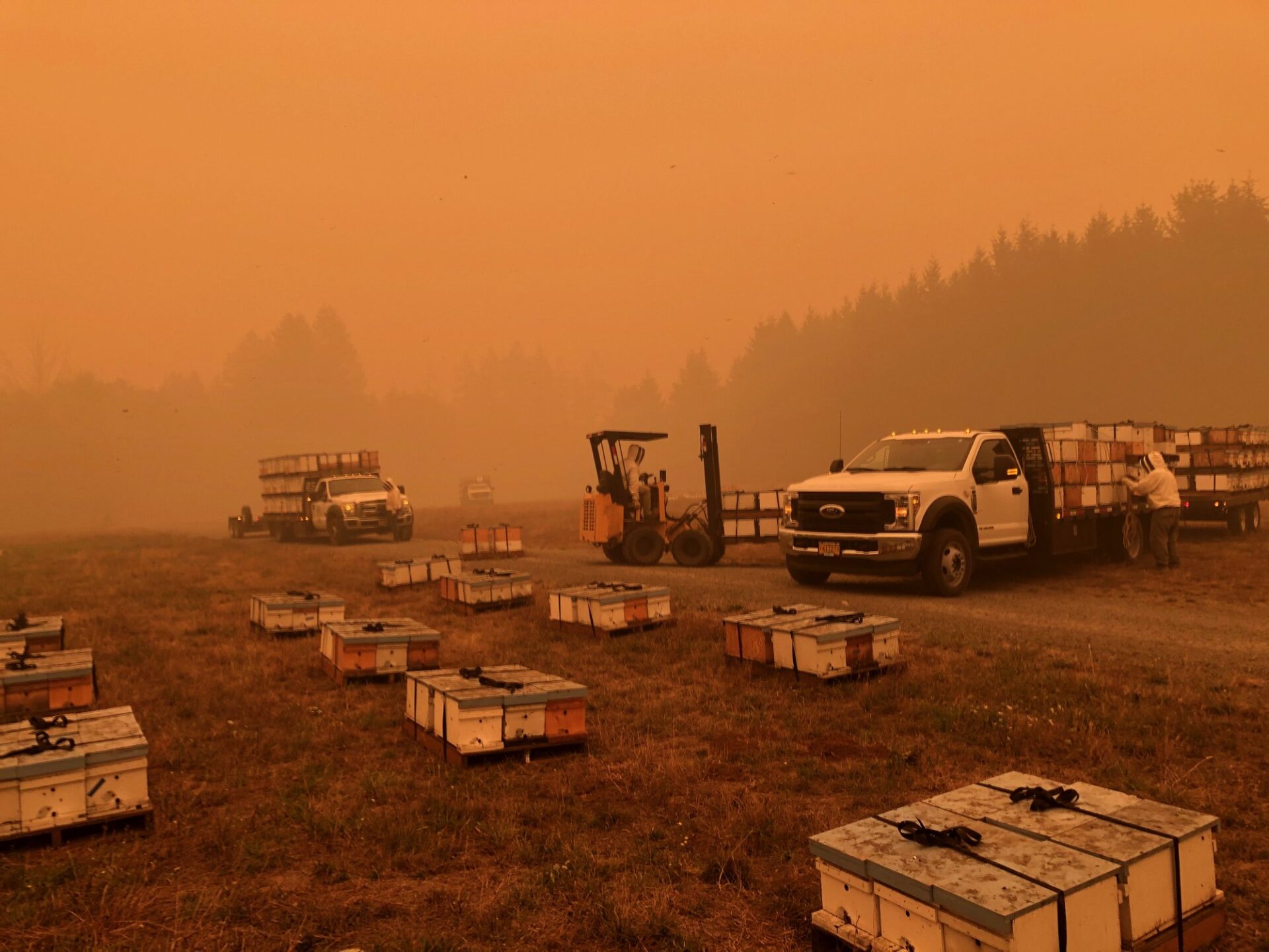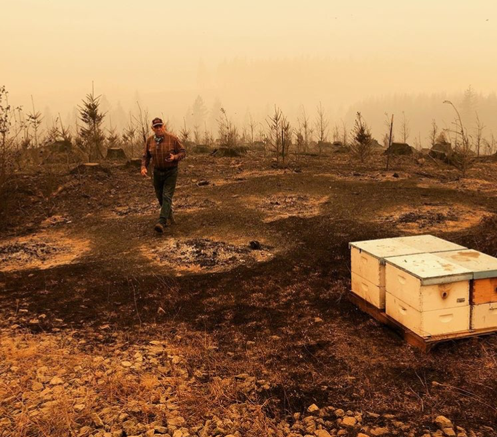
While individual beekeepers were impacted by the California wildfires, potentially preventing them from filling their pollination contracts, the overall honeybee supply is expected to meet almond pollination demand in 2021.
Roger Everett with Terra Bella Honey Co. said he can’t see the hive loss due to fire as a huge issue for the almond industry, but individual beekeepers in many locations statewide experienced hive loss due to wildfires. Hives placed in foothill areas for the summer and fall forage were lost in some instances, but other beekeepers were able to gain access to the bee yards and remove hives.
The largest of the California wildfires, the Creek Fire, wiped out an estimated 300 hives owned by David Blair Apiaries in Kerman. Vicki Blair said that the hives were placed near the Mammoth Pools at Rock Creek for summer forage. Clay Ford, a beekeeper who provides pollination services, lost 100 hives as the swift moving LNU Complex fire swept down into the Vacaville area. Oregon beekeeper George Hanson reported losses due to fire.
“We had no warning, no way to move those hives out of danger as the fire approached,” Ford said. Several other beekeepers in the area also lost hives, but Ford said they were already working to build boxes and place new colonies to rebuild their bee populations.
Wildfires and Mites
Elina Niño, UCCE Apiculturist, said she knew of several California beekeepers who lost hundreds of colonies to wildfires throughout the state.
“Based on the state of our own colonies, beekeepers seemed to have had a pretty rough year between the fires, lack of forage and the apparent increase in varroa mite pressure,” she said.
Niño said that beekeepers who have lost colonies can’t do too much to increase colony numbers and expand late in the season as they can’t split colonies. Colonies naturally start building up in the spring, she said, and beekeepers can use this natural buildup to increase colony numbers, but that usually ends up happening after almond pollination. This means whatever colonies they are going into the winter with will be the colonies that will they have to work with, assuming no further losses between now and almond pollination.
Niño said she can’t estimate the number of colonies that will be available for pollination, but with the growing number of producing almond acres at about 1.5 million and estimated number of honeybee colonies in the U.S. hovering between 1.6 million to 1.8 million, bee supply is of valid concern.
She said other factors to consider as pollination season nears is colony strength as stronger colonies can deploy more active foragers than weaker colonies.
Lack of forage to begin with and loss of forage due to drought and the wildfires are also concerns, Niño said. Research has shown that bees with access to diverse and plentiful forage are better able to deal with pathogens and even pesticide exposure.
Gene Brandi, a Los Banos beekeeper and past president of the American Beekeeping Federation, said it is too early to say if there will be a negative impact from recent wildfires on total honeybee hives needed for almond pollination. Brandi said that at least half the bees that pollinate almonds come to California from out of state. Even if an orchard is planted to a self-fertile variety, he noted, growers are contracting for pollination services.
“They see hive numbers as insurance, especially if the weather is wet and cold during bloom,” Brandi said.
Brittney Goodrich, assistant UCCE specialist, reports in her Almond Pollination Outlook that 2.4 million honeybee colonies were used for almond pollination in 2020. According to apiary shipment data provide by CDFA, 1.9 million honeybee hives were shipped into California last year, and that was down 3% from 2019. This year, the estimated demand is for 2.5 million colonies, amounting to 88% of the total colonies in the U.S.
Project Apis m., a Utah-based organization that funds research into honeybee health, reports that they are directing the Seeds for Bees program to connect with beekeepers and almond growers and provide seeds to put forage back on the landscape. In areas where native habitat restoration is not suitable, the Seeds for Bees seed mixes are meant to provide high quality pollinator nutrition and preserve soil quality until natural habitat rebounds or is restored.
National Impacts on Bee Numbers
Honeybee numbers outside of California have been impacted by fires in the Pacific Northwest, drought conditions in the Midwest and hurricanes that affected Louisiana and Texas – states that supplied almond pollination services in 2020. Adding in Florida and Alabama, states also affected by hurricanes, about 10% of supply for the almond pollination services may be impacted.
The new bee colony report from the USDA notes an increase in the number of colonies across the nation. Nationally, colonies have increased by 14% over the past year. Nebraska, Oklahoma, Michigan and Maine reported the largest percent increases over the last two years. California and Florida, two leaders in honeybee populations, have lost colonies since 2018.
Goodrich’s Outlook Report noted that the current USDA Risk Management Agency policy is for a minimum of two colonies with six active frames per acre. Almond growers can deviate from this as long as they have consistently been using the same number of hives per acre and colony strength requirements and have had consecutive non-loss years.











